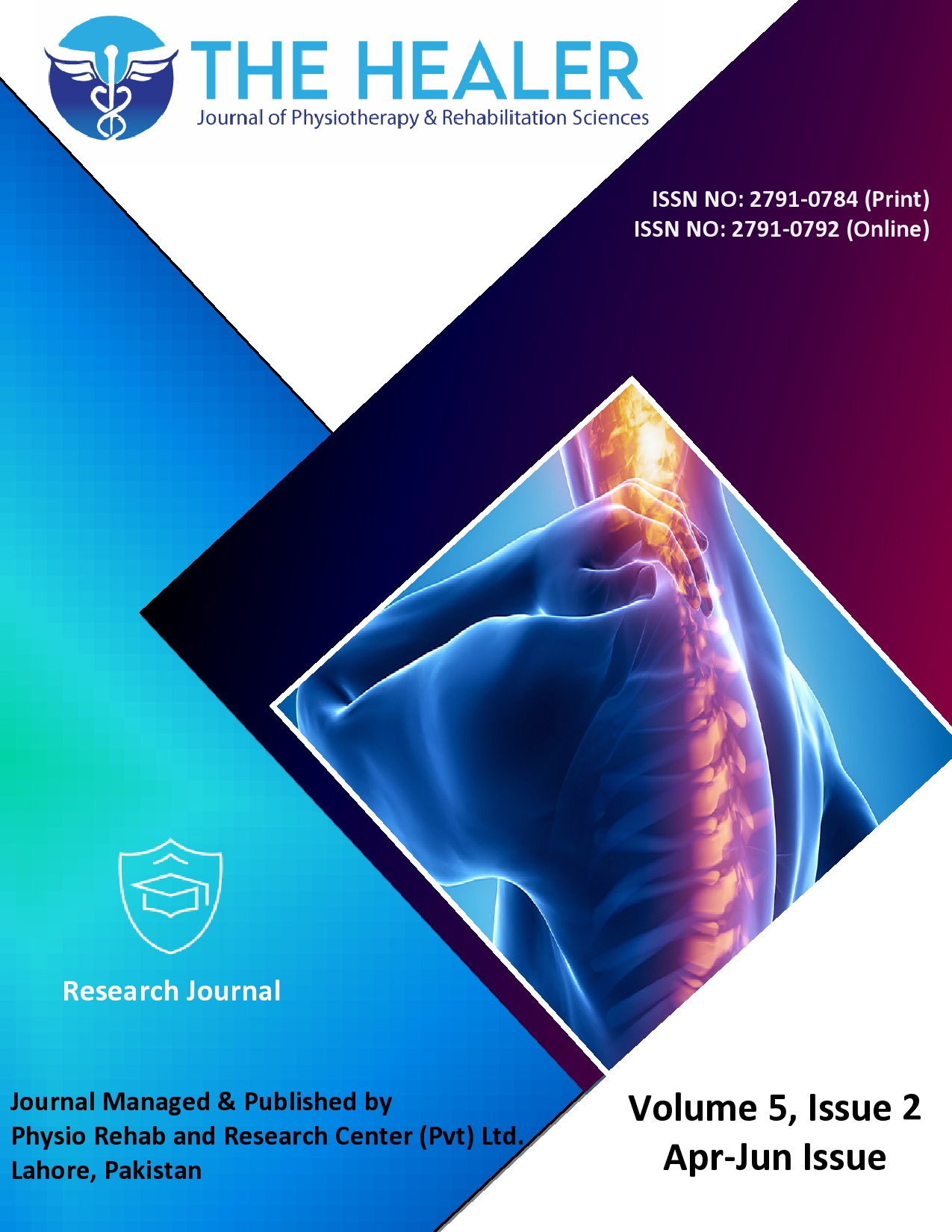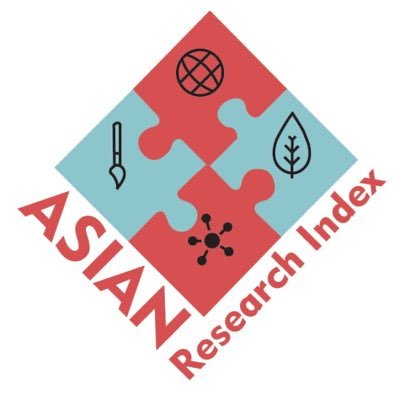Prevalence of Musculoskeletal Disorders, Risk Factors and Their Impact on Quality of Life in Peshawar Traffic Police
DOI:
https://doi.org/10.55735/j4aks434Keywords:
Musculoskeletal disorders , Physical activity , Quality of life , Risk factors , Traffic policeAbstract
Background: Traffic police are consistently exposed to multiple risk factors such as standing, awkward postures, and repetitive movements, increasing their susceptibility to musculoskeletal disorders, which in turn may significantly impair their quality of life. Objective: To assess the prevalence of musculoskeletal disorders, associated risk factors, and the impact of these disorders on quality of life among traffic police in Peshawar. Methodology: This cross-sectional study was conducted at the City University of Science and Information Technology, Peshawar, Pakistan. The inclusion criteria were male traffic police aged 20-50 years who consented to participate, while those with systemic diseases, recent surgeries, trauma, or office-based duties were excluded. Data were collected by using the comprehensive questionnaire incorporating the Nordic Musculoskeletal Disorder Questionnaire, Numerical Pain Rating Scale Questionnaire, the quality of life evaluation, and the Physical Activity Risk Factor Questionnaire. Informed consent was taken before the participant participated, and informed consent was ensured, ensuring confidentiality, anonymity, and adherence to ethical standards approved by the institutional review board of City University, Peshawar and Peshawar Police Line. Descriptive statistics (frequencies, means, percentages, and standard deviations) were used to summarize demographics, while inferential analyses, including chi-square tests, normality tests, and logistic regression, were employed to explore associations between musculoskeletal disorders risk factors and quality of life. Results: The study found that 88.1% of participants experienced moderate musculoskeletal disorders, with the lower back (21.1%), shoulders (14.7%), and neck (12.8%) being the most affected regions. Significant associations were found between age and musculoskeletal disorders severity (p=0.04), pain duration and musculoskeletal disorders severity (p=0.01), and duration of service and pain intensity (p<0.00). Conclusion: Physical activity risk increased with both age and service duration, indicating cumulative ergonomic stress. Musculoskeletal disorders are highly prevalent among traffic police in Peshawar and significantly affect their physical health and quality of life.
Downloads
References
1. Hout JD, Ryu J. The association between musculoskeletal disorders and lead apron use in healthcare workers: A systematic review and meta-analysis. Safety Science 2025; 181: 106669.
https://doi.org/10.1016/j.ssci.2024.106669 DOI: https://doi.org/10.1016/j.ssci.2024.106669
2. Asuquo EG, Murphy‐Tighe S, Ryan R, O'Sullivan K. How is social support defined, categorized and measured in studies of work‐related musculoskeletal disorders among hospital nurses: A scoping review. Journal of Advanced Nursing 2025; 81(3): 1130-41.
https://doi.org/10.1111/jan.16356 DOI: https://doi.org/10.1111/jan.16356
3. Afridi B, Sikander MS KH. Prevalence of Nonspecific Low Back Pain Among the Long Route Bus Drivers in Peshawar, Khyber Pakhtunkhwa, Pakistan. Rehabilitation Communications 2023; 2(1): 5-11.
https://doi.org/10.55627/rehab.002.01.0214 DOI: https://doi.org/10.55627/rehab.002.01.0214
4. Thangamuthu M, Hanumegowda PK, Gnanasekaran S, Uddin M. Assessment of musculoskeletal disorders among bus drivers in South India: implications for health and safety. International Journal of Occupational Safety and Ergonomics 2025: 1-11.
https://doi.org/10.1080/10803548.2025.2473761 DOI: https://doi.org/10.1080/10803548.2025.2473761
5. Vasireddi N, Vasireddi N, Shah AK, et al. High prevalence of work-related musculoskeletal disorders and limited evidence-based ergonomics in orthopaedic surgery: a systematic review. Clinical Orthopaedics and Related Research® 2024; 482(4): 659-71.
https://doi.org/10.1097/CORR.0000000000002904 DOI: https://doi.org/10.1097/CORR.0000000000002904
6. Vos T, Lim SS, Abbafati C, et al. Global burden of 369 diseases and injuries in 204 countries and territories, 1990-2019: a systematic analysis for the Global Burden of Disease Study 2019. The Lancet 2020; 396(10258): 1204-22.
https://doi.org/10.1016/S0140-6736(20)30925-9 DOI: https://doi.org/10.1016/S0140-6736(20)30925-9
7. Greggi C, Visconti VV, Albanese M, et al. Work-related musculoskeletal disorders: a systematic review and meta-analysis. Journal of Clinical Medicine 2024; 13(13): 3964.
https://doi.org/10.3390/jcm13133964 DOI: https://doi.org/10.3390/jcm13133964
8. Ahmed H, Saeed MA, Attique F. The burden of musculoskeletal pain, associated sociodemographic factors, and disability in Pakistan. International Journal of Rheumatic Diseases 2024; 27(1): e14972.
https://doi.org/10.1111/1756-185X.14972 DOI: https://doi.org/10.1111/1756-185X.14972
9. Das SK, Patyal VS, Ambekar S. Modelling of risk factors leading to work-related musculoskeletal disorders in medical practitioners. Safety Science 2024; 172: 106427.
https://doi.org/10.1016/j.ssci.2024.106427 DOI: https://doi.org/10.1016/j.ssci.2024.106427
10. Shinwari NU, Sikander MS, Haider M, Jan SIU, Hassan M, Naz M. Work-related musculoskeletal symptoms and their ergonomic risk factors among surgeons of Peshawar. Insights-Journal of Health and Rehabilitation 2024; 2(2 (Health & Allied)): 166-72.
https://doi.org/10.71000/ijhr93 DOI: https://doi.org/10.71000/ijhr93
11. Paudel L, Manandhar N, Joshi SK. Work-related musculoskeletal symptoms among traffic police: a review. International Journal of Occupational Safety and Health 2018; 8(2): 4-12.
https://doi.org/10.3126/ijosh.v8i2.23330 DOI: https://doi.org/10.3126/ijosh.v8i2.23330
12. Sobti S, Sahni B, Bala K. Surgical coverage of cataract in a rural area of North India: a cross-sectional study. Journal of Family Medicine and Primary Care 2020; 9(8): 4112-7.
https://doi.org/10.4103/jfmpc.jfmpc_520_20 DOI: https://doi.org/10.4103/jfmpc.jfmpc_520_20
13. Sikandar MS, Noor TU, Noor J, Nawaz Q, Rehman Z, Khan HY. Prevalence of Patellofemoral Pain Syndrome and Its Impact on Quality of Life Among Recreational Athletes at Private Universities in Peshawar. The Healer Journal of Physiotherapy and Rehabilitation Sciences 2025; 5(2): 343-8.
https://doi.org/10.55735/7gzc1b35 DOI: https://doi.org/10.55735/7gzc1b35
14. Farì G, Bernetti A. Musculoskeletal diseases: Aetiology, clinical implications, rehabilitation and treatment. Journal of Personalized Medicine 2025; 15(1): 35
https://doi.org/10.3390/jpm15010035 DOI: https://doi.org/10.3390/jpm15010035
15. Núñez-Cortés R, Espin A, Pérez-Alenda S, et al. Association between pain coping and symptoms of anxiety and depression, and work absenteeism in people with upper limb musculoskeletal disorders: A systematic review and meta-analysis. Archives of Physical Medicine and Rehabilitation 2024; 105(4): 781-91.
https://doi.org/10.1016/j.apmr.2023.07.003 DOI: https://doi.org/10.1016/j.apmr.2023.07.003
16. Durrani HI, Rehman M, Khan Y, et al. Frequency of musculoskeletal disorders among dialysis patients with chronic kidney diseases in the Institute of Kidney Diseases, Hayatabad, Peshawar, a cross-sectional study. Journal of Medical & Health Sciences Review 2025; 2(2).
https://doi.org/10.62019/khayw464 DOI: https://doi.org/10.62019/khayw464
17. Kotnik P, Koprivnik N. Musculoskeletal Disorders in the Workplace of Physiotherapists: Occupational Risk Factors and Their Role in Prevention and Management: A Systematic Review. Open Access Macedonian Journal of Medical Sciences 2024; 12(2): 347-55.
https://doi.org/10.3889/oamjms.2024.11900 DOI: https://doi.org/10.3889/oamjms.2024.11900
18. White AJ, Nowacki AS, Woodrow SI, Steinmetz MP, Benzil DL. Ergonomics, musculoskeletal disorders, and surgeon gender in spine surgery: a survey of practising spine surgeons. Journal of Neurosurgery: Spine 2024; 40(4): 529-38.
https://doi.org/10.3171/2023.11.SPINE23705 DOI: https://doi.org/10.3171/2023.11.SPINE23705
19. Muhammed Z, Abubakar IR. Improving the quality of life of urban communities in developing countries. Responsible Consumption and Production: Springer; 2019: 1-14. DOI: https://doi.org/10.1007/978-3-319-71062-4_25-1
https://doi.org/10.1007/978-3-319-95726-5_25 DOI: https://doi.org/10.1007/978-3-319-95726-5_25
20. Grešner P, Stȩpnik M, Król MB, et al. Dysregulation of markers of oxidative stress and DNA damage among nail technicians despite low exposure to volatile organic compounds. Scandinavian Journal of Work, Environment & Health 2015: 579-93.
https://doi.org/10.5271/sjweh.3523 DOI: https://doi.org/10.5271/sjweh.3523
21. Jamart C, Gomes AV, Dewey S, Deldicque L, Raymackers J-M, Francaux M. Regulation of ubiquitin-proteasome and autophagy pathways after acute LPS and epoxomicin administration in mice. BMC Musculoskeletal Disorders 2014; 15(1): 166.
https://doi.org/10.1186/1471-2474-15-166 DOI: https://doi.org/10.1186/1471-2474-15-166
22. Alshami AM, Alhassany HA. Girth, strength, and flexibility of the calf muscle in patients with knee osteoarthritis: A case-control study. Journal of Taibah University Medical Sciences 2020; 15(3): 197-202.
https://doi.org/10.1016/j.jtumed.2020.04.002 DOI: https://doi.org/10.1016/j.jtumed.2020.04.002

Downloads
Published
License
Copyright (c) 2025 The Healer Journal of Physiotherapy and Rehabilitation Sciences

This work is licensed under a Creative Commons Attribution 4.0 International License.














